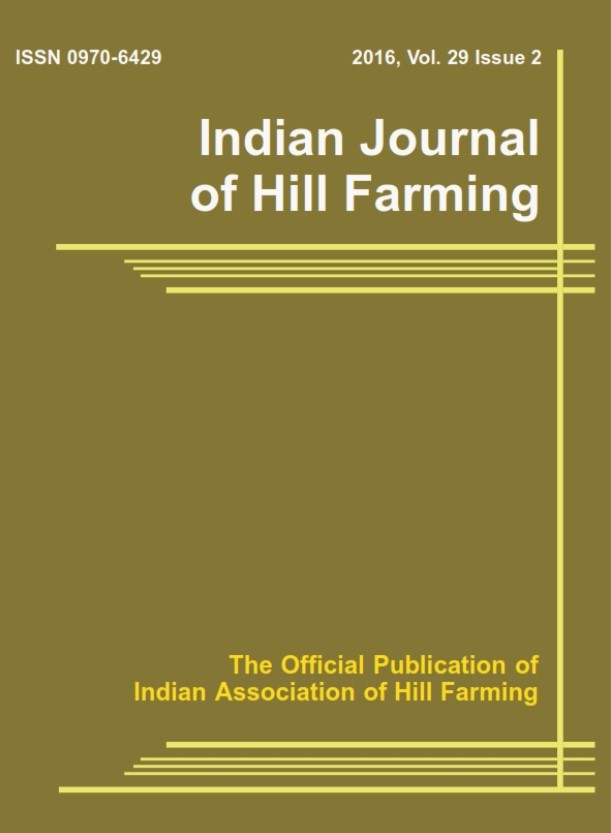Nutritional, phytochemical and in vitro inhibitory activities of chow-chow (Sechium edule): a common home garden crop of Northeast India.
DOI:
https://doi.org/10.56678/Keywords:
Phytochemical, antioxidants, antiproliferative, chayoteAbstract
Sechium edule belonging to the Cucurbitaceae family is commonly consumed as vegetable and also used as feed for livestock, is one of the important home garden crops grown in North East (NE) Indian States. It is reported to have a wide range of therapeutics properties. We evaluated the nutritional content, phytochemicals and antiproliferative effects of two common genotypes of Sechium edule from Meghalaya. The proximate composition (CP, CF, EE, NFE and TA) was in range as reported by other workers. The phenol content of DG genotype (6.76 mg) was higher (p 0.05) as compared to the LG genotype (4.62 mg) in terms of gallic acid equivalent (GAE/100g). But the flavonoids content variation of 21.27 - 22.62 mg between the two genotypes was not significant in terms of catechin equivalents (CE)/100g. The total antioxidant capacity as acid equivalent antioxidant capacity (AEAC) was significantly higher (p 0.05) for DG (76.67 mg) as compared to LG (41.67 mg) genotypes. Aqueous extract of both varieties showed in vitro growth inhibition of cancerous cells in a concentration dependant manner but the LG genotype has greater growth inhibition compared to the DG genotype in both the MCF-7 and SAS cells which was correlated with the findings of the apoptotic activity determined in terms of percentage by flow cytometry.Downloads
Published
2023-03-31
Issue
Section
Articles
License
Copyright (c) 2024 K. Puro, A. K. Jha, S. Das, AAP Milton, S. R. Assumi, K. P. Mahapatra, S. Ghatak, A. Sen (Author)

This work is licensed under a Creative Commons Attribution-NonCommercial-NoDerivatives 4.0 International License.
How to Cite
Nutritional, phytochemical and in vitro inhibitory activities of chow-chow (Sechium edule): a
common home garden crop of Northeast India. (2023). Indian Journal of Hill Farming, 37(01), 173-180. https://doi.org/10.56678/




